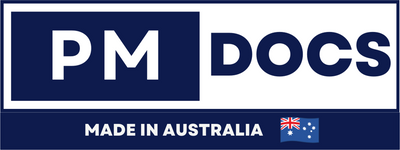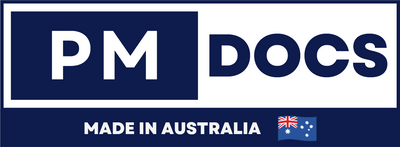ISO 17025 Laboratories In Australia Accreditation Requirements
Achieving Excellence: A Comprehensive Guide To ISO 17025 Accreditation For Australian Laboratories
In the dynamic world of testing and calibration, accuracy, reliability, and trust are paramount. For laboratories in Australia, achieving these benchmarks often means aligning with the international standard for competence: ISO/IEC 17025. This accreditation isn't just a certificate on the wall; it's a profound commitment to quality, a passport to broader markets, and a foundation for scientific integrity.

This comprehensive guide will walk Australian laboratories through the nuances of ISO 17025, detailing its requirements, outlining the accreditation process, and highlighting the vital role of the National Association of Testing Authorities (NATA).
What is ISO/IEC 17025? The Global Standard For Lab Competence
ISO/IEC 17025, titled "General requirements for the competence of testing and calibration laboratories," is an international standard developed by the International Organization for Standardization (ISO) and the International Electrotechnical Commission (IEC). It provides a framework for laboratories to demonstrate that they operate competently and generate valid results, thereby fostering confidence in their work both nationally and internationally.
For an Australian laboratory, this means putting in place a robust quality management system (QMS) and demonstrating technical competence across all aspects of their operations – from sample handling to reporting results.
The Undeniable Value Of ISO 17025 Accreditation For Australian Labs
Why undertake the rigorous journey to ISO 17025 accreditation? The benefits are manifold and far-reaching:
-
Enhanced Credibility and Trust: Accreditation by a recognised body like NATA signifies a laboratory's commitment to quality and competence, instilling confidence in clients, regulators, and stakeholders.
-
Competitive Advantage: In a crowded market, accreditation differentiates your lab, often becoming a prerequisite for government contracts, major industry projects, and international collaborations.
-
Improved Quality Management: Implementing the ISO 17025 standard streamlines processes, reduces errors, and ensures consistency in testing and calibration activities.
-
Reduced Risk: A robust QMS helps identify and mitigate potential risks, leading to more reliable results and fewer disputes.
-
International Recognition: ISO 17025 accreditation is globally recognised, facilitating mutual acceptance of data across borders and reducing the need for re-testing.
-
Operational Efficiency: Standardised procedures, clear roles, and continuous improvement initiatives lead to more efficient and cost-effective operations.
- Compliance with Regulatory Requirements: Many industries and government bodies in Australia require or prefer testing and calibration to be performed by ISO 17025 accredited laboratories.
Demystifying ISO 17025: Management vs. Technical Requirements
The ISO 17025 standard is broadly divided into two main categories of requirements that laboratories must address:
Table 1: Key ISO 17025 Requirements Overview
| Category | Focus | Examples of Requirements |
|---|---|---|
| Management Requirements | Pertains to the operation and effectiveness of the laboratory's quality management system (QMS). | Control of documents, control of records, actions to address risks and opportunities, improvement, corrective actions, internal audits, management reviews. |
| Technical Requirements | Addresses the factors that determine the correctness and reliability of the tests and/or calibrations performed by the laboratory. | Personnel competence, facilities and environmental conditions, equipment, metrological traceability, externally provided products and services, methods, validation, measurement uncertainty, sampling, handling of test/calibration items, reporting results. |
Both aspects are crucial. A technically competent lab without a proper management system can't consistently deliver reliable results, and a well-managed lab lacking technical proficiency will fail to meet the standard's core purpose.
NATA: Australia's Gateway To ISO 17025 Accreditation
In Australia, the National Association of Testing Authorities (NATA) is the sole accreditation body for ISO/IEC 17025. NATA is globally recognised and a signatory to the International Laboratory Accreditation Cooperation (ILAC) Mutual Recognition Arrangement (MRA). This means that test and calibration results issued by NATA-accredited laboratories are accepted in over 100 economies worldwide, avoiding technical barriers to trade.
NATA's role is to assess, audit, and accredit testing and calibration laboratories across a vast range of industries, ensuring their adherence to ISO 17025 and other relevant standards.
The NATA Accreditation Journey: A Step-by-Step Guide
Securing ISO 17025 accreditation through NATA is a structured process that demands meticulous planning, dedication, and resources.
Table 2: The NATA Accreditation Process Stages
| Stage | Description |
|---|---|
| 1. Initial Inquiry & Gap Analysis | Begin by understanding the standard and your current operations. Conduct a gap analysis to identify areas requiring improvement to meet ISO 17025 requirements. This often involves comparing existing procedures, personnel competence, and equipment against the standard. |
| 2. QMS Development & Implementation | Develop or revise your Quality Management System (QMS) documentation, including a Quality Manual, standard operating procedures (SOPs), work instructions, and forms, to address all clauses of ISO 17025. Implement these procedures rigorously throughout your laboratory operations. |
| 3. Internal Audit & Management Review | Conduct a full internal audit against the ISO 17025 standard to ensure all requirements are being met and effectively implemented. Following this, perform a management review, where top management assesses the effectiveness of the QMS and identifies areas for improvement. |
| 4. Application to NATA | Submit your accreditation application to NATA, including your complete QMS documentation and details of your scope of accreditation (the specific tests or calibrations for which you seek accreditation). |
| 5. NATA Assessment | NATA assigns a team of technical experts (lead assessor and technical assessors) who review your documentation and conduct an on-site assessment of your laboratory. This involves observing tests, interviewing staff, examining equipment, and verifying compliance with all ISO 17025 requirements. |
| 6. Addressing Non-Conformances | Following the assessment, NATA will issue a report detailing any non-conformances (areas where the lab does not meet the standard). The laboratory must then implement corrective actions to address these findings. |
| 7. Granting Accreditation | Once NATA is satisfied that all non-conformances have been effectively addressed, accreditation is granted. The laboratory's details and scope of accreditation are then published on the NATA website. |
| 8. Surveillance & Reassessment | Accreditation is not a one-time event. NATA conducts regular surveillance visits (typically annually) and a full reassessment (typically every 2-4 years) to ensure ongoing compliance and continuous improvement. |
Core Pillars Of Compliance: What NATA Assessors Look For?
When NATA assessors visit your lab, they're not just checking boxes; they're verifying the practical application of the standard. Here are some critical areas they will scrutinise:
-
Personnel Competence:
-
Requirements: Staff must have the necessary education, training, technical knowledge, skills, and experience for their assigned tasks. This includes understanding the significance of deviations and the scope of their activities.
-
Evidence: Training records, competency assessments, job descriptions, authorisations, and demonstrated proficiency during observation.
-
Requirements: Staff must have the necessary education, training, technical knowledge, skills, and experience for their assigned tasks. This includes understanding the significance of deviations and the scope of their activities.
-
Metrological Traceability & Equipment:
-
Requirements: All equipment used for testing or calibration must be calibrated to achieve the accuracy or uncertainty required, and calibration must be traceable to the International System of Units (SI). Equipment needs to be properly maintained, and records kept.
-
Evidence: Calibration certificates, maintenance logs, equipment registers, defined calibration schedules, and verification of intermediate checks.
-
Requirements: All equipment used for testing or calibration must be calibrated to achieve the accuracy or uncertainty required, and calibration must be traceable to the International System of Units (SI). Equipment needs to be properly maintained, and records kept.
-
Methods, Validation, and Verification:
-
Requirements: Laboratories must use appropriate methods and procedures for all testing and calibration activities. These methods, whether standard, non-standard, or lab-developed, must be validated or verified to ensure they are fit for purpose.
-
Evidence: Documented methods/SOPs, validation reports, verification records (e.g., precision, bias, linearity, specifity studies), and method performance data.
-
Requirements: Laboratories must use appropriate methods and procedures for all testing and calibration activities. These methods, whether standard, non-standard, or lab-developed, must be validated or verified to ensure they are fit for purpose.
-
Measurement Uncertainty:
-
Requirements: Laboratories must identify the contributions to measurement uncertainty and estimate measurement uncertainty for all testing and calibration where it is relevant to the validity or application of the test results, or where the client requests it.
-
Evidence: Explicitly documented uncertainty budgets, calculations, and clear reporting of uncertainty with results where applicable.
-
Requirements: Laboratories must identify the contributions to measurement uncertainty and estimate measurement uncertainty for all testing and calibration where it is relevant to the validity or application of the test results, or where the client requests it.
-
Quality Control and Assurance:
-
Requirements: A laboratory must have quality control procedures for monitoring the validity of results, including regular use of certified reference materials, participation in interlaboratory comparisons (proficiency testing), and replication of tests.
-
Evidence: Proficiency testing results, internal quality control charts, interlaboratory comparison data, use of reference materials, and data analysis demonstrating control.
-
Requirements: A laboratory must have quality control procedures for monitoring the validity of results, including regular use of certified reference materials, participation in interlaboratory comparisons (proficiency testing), and replication of tests.
-
Facilities and Environmental Conditions:
-
Requirements: The laboratory facilities must be suitable for the activities performed, preventing contamination, interference, or adverse effects on the validity of results. Environmental conditions (temperature, humidity, vibration) must be monitored and controlled as necessary.
-
Evidence: Facility layout plans, environmental monitoring records, access control measures, and clear segregation of incompatible activities.
-
Requirements: The laboratory facilities must be suitable for the activities performed, preventing contamination, interference, or adverse effects on the validity of results. Environmental conditions (temperature, humidity, vibration) must be monitored and controlled as necessary.
-
Documentation and Records:
-
Requirements: A comprehensive set of documented procedures, policies, and records must be maintained to demonstrate compliance with the standard and the effective operation of the QMS.
- Evidence: Quality Manual, SOPs, work instructions, forms, contracts, internal audit reports, management review minutes, corrective action records, and training records.
-
Requirements: A comprehensive set of documented procedures, policies, and records must be maintained to demonstrate compliance with the standard and the effective operation of the QMS.
Overcoming The Hurdles: Tips For Success
The path to ISO 17025 accreditation can be challenging, but with strategic planning, it is highly achievable:
-
Secure Management Commitment: The support and resources from top management are crucial for the success of the project.
-
Appoint a Dedicated Quality Manager: This individual will be instrumental in driving the accreditation project, developing the QMS, and ensuring ongoing compliance.
-
Invest in Training: Ensure all staff understand their roles within the QMS and are technically competent. NATA often offers training courses.
-
Start with a Gap Analysis: Understand where your lab stands against the standard before you begin writing documents.
-
Simplify Documentation: While comprehensive, ensure your QMS documents are practical, easy to understand, and reflect actual practices. Avoid over-complication.
-
Conduct Thorough Internal Audits: Treat internal audits as dress rehearsals for the NATA assessment. Identify and address non-conformances proactively.
-
Participate in Proficiency Testing: Actively engage in interlaboratory comparisons to demonstrate competence and identify areas for improvement in your testing methods.
-
Utilise Consultants (Where Needed): For labs new to accreditation, an experienced consultant can provide invaluable guidance and support.
-
Maintain Records Diligently: "If it's not documented, it didn't happen" is a key principle. Ensure all activities are consistently recorded.
- Embrace Continuous Improvement: Accreditation is an ongoing journey. Regularly review your QMS, evaluate performance, and implement improvements.
Conclusion
For Australian laboratories, ISO 17025 accreditation is more than just a regulatory hurdle; it's a testament to a commitment to quality, accuracy, and operational excellence. Under the expert guidance of NATA, the journey to accreditation strengthens a lab's foundation, expands its opportunities, and solidifies its reputation in the global scientific community. While demanding, the benefits of achieving this internationally recognised standard far outweigh the investment, positioning your laboratory at the forefront of trust and competence.
Are you ready to elevate your laboratory's standing and assure your clients of world-class results? Begin your ISO 17025 accreditation journey today.




